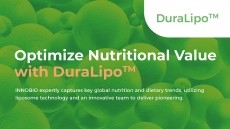New products in infant nutrition sift through limited number of ingredients

During the event focused on prenatal and infant nutrition, at which this reporter was one of the presenters, attendees heard that the category is one that many ingredient developers approach with caution. Innovation has been muted.
In weight management and sports nutrition, by contrast, new ingredients crop up frequently, sometime backed by only the thinnest of scientific dossiers. One or two suggestive rat studies or a lone small human cohort study might be enough to create a wave in these categories.
Not so in infant nutrition, by contrast, the picture is one of deliberation, at least in the development of new ingredients. These categories—pregnant or nursing women or infants or toddlers—are after all among the areas that dietary supplement formulators often specifically exclude from their products.
Nevertheless, some researchers at the event, which took place last week at DSM’s Parsippany, NJ facility, noted that new products show up all the time, mixing and matching those ingredients to find new niches in the market.
Multis dominate space
Among the tried and true ingredients are the letter of vitamins, which makes sense, both from a research as well as a commercial perspective. DSM is, after all, the world’s biggest supplier of vitamins.
There is ample evidence for the importance of these ingredients in the first 1,000 days of life, or from conception to the age of two. One recent study in the journal Fertility and Sterility found that prenatal vitamins reduced the chance of losing a pregnancy by 55%. A meta analysis published last year in the Journal of the American Medical Association found a link between Vitamin D supplementation and a lessened risk of low birthweight babies.
Roles for folic acid, choline, others
Another key nutrient, one that is often found in prenatal formulations, is folic acid. This ingredient is so important in its role of preventing neural tube defects in the developing fetus that is has found its way into official dietary recommendations.
Choline is another important nutrient. The science is building for this ingredient, including studies linking it to proper brain development and a reduction in the risk of children subsequently developing conditions such as schizophrenia. But official recognition of the importance of this ingredient is still a step below that of folic acid. Nevertheless, the story is strong enough that it has supported the launch of a new company, Best Choline, that concentrates on the ingredient. The brand recently launched a new gummy range featuring the nutrient.
Omega 3s, specifically DHA, have been shown to have a key role in the proper development of infant brain tissue as well as supporting growth of the eyes. DSM is one of the major suppliers in this arena with its array of algal DHA ingredients.
Other ingredients that play in the space are lutein for brain and eye health and probiotics for easier digestion and less colic among breastfed newborns. There is some limited data for the role of direct probiotic supplementation for newborns, too.
HMOs spark innovation
But there is one area within the category where innovation is proceeding apace. The discovery of Human Milk Oligosaccharides, or HMOs, has sparked a wave of innovation in the space.
Researchers have known for a while now that breast milk contains a non digestible fraction, identified as HMOs. These carbohydrate molecules have been shown to preferentially feed a particular gut microbe, Bifidobacterium infantis. In the guts of breast fed babies, this microbe predominates. In the guts of babies fed on formula, it’s rare or absent.
So these molecules are almost like Mother Nature’s built in prebiotics. Babies with more B. infantis have been shown to have lower levels of inflammation. They have less colic, and other positive outcomes. Players actively investigating HMOs include DuPont in a partnership with Lonza, Friesland Campina, Glycom A/S, Evolve Bioscience, Abbott, and Nestlé. One of the attractions here is that these molecules are something that the baby would be receiving anyway if they were breastfed.















